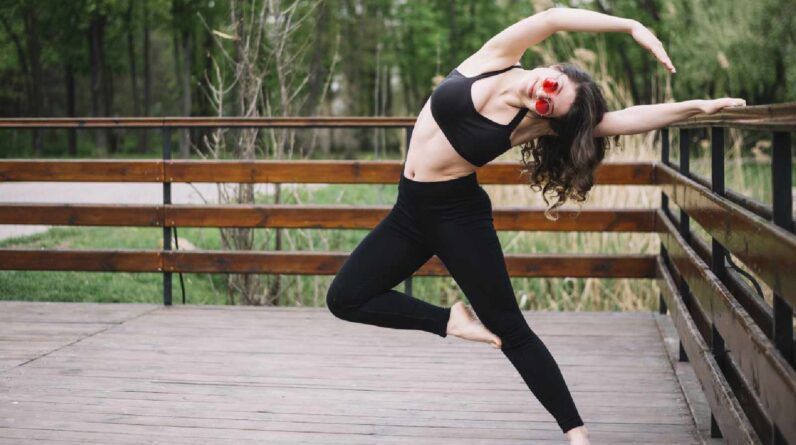
Being flexible is good for your health. Know the benefits of flexibility and exercises and stretches to improve it for better health. Keyphrase Health benefits of flexibility
As kids, you can move, flip around, bend and touch your toes with ease. Flexibility is not much of a problem for children. But as we grow older, we tend to get a bit stiff, especially because of less physical activities. A lack of flexibility is not a good sign for your health. It may lead to pain that can be felt in different parts of the body, especially in the joints. If you are not able to twist or bend much, there may be a higher chance of getting injured. Clearly, there are benefits of flexibility. So, you should make efforts to improve flexibility by doing stretches and being physically active.
What are the benefits of flexibility?
Flexibility ideally refers to the ability to adapt and change according to situations. “Physically, one can be called flexible if their muscles, joints and soft tissues possess the ability to move through an unrestricted, pain-free range of motion,” says physiotherapist and fitness expert Dr Aijaz Ashai. Here are some key health benefits of a flexible body:
1. Reduction in muscle imbalance
Sometimes, one group of muscles may get weaker than the others, causing imbalances and unwanted accidents. If your body stays flexible then you won’t have too many complaints regarding muscle imbalance.

2. Reduced risk of low back pain
During a 2023 study published in Plos One, researchers found that the risk of low back pain was linked to inflexibility. Sitting in the same position for long periods of time is bad for your posture and back. It can cause issues like back pain and sprains. “Being flexible means having strong muscles and joints which can aid your body in dealing with the stress your daily life puts on you, and in turn avoid having a poor posture, and reduced risk of back pain,” says the expert.
3. Less chances of getting injured
A flexible body means your muscles and joints can move more freely and also tolerate bodily stress better. This is done by absorbing and distributing pressure more effectively, and so, helps in avoiding any major injuries.
You may also like


4. Improved range of motion
Flexibility allows an increase in the range of motion that can be performed by your joints and muscles, enhancing everyday performance. So, you can easily bend or lift heavy weights such as groceries.
5. Improved circulation
Being flexible boosts the body’s blood flow to muscles and other tissues, delivering more oxygen and nutrients, and aiding in overall well-being. “It also helps in reduction in muscle soreness or stiffness which is usually caused due to lack of circulation,” says the expert.
6. Decreased muscle tension
Having flexible muscles indicates the absence of knots and stiffness. This alleviates any kind of discomfort and improves relaxation. This may also help in improving your stride, and agility.
How to improve flexibility?
Regular exercise is key to being more flexible. You may try certain moves to improve your flexibility day by day!
1. Sideways bend
Sideways bend can help in restoring flexibility to the lower back, according to the UK’s National Health Service.
- Stand up with both arms by your sides and feet hip-width apart.
- Move your right arm down your side as far as you can. While lowering your arm, you should be able to feel a stretch on the opposite hip.
- Repeat the steps using your other arm.
- Hold the stretch for at least five seconds.
2. Hamstring stretch
“This targets the hamstrings and the lower back, stretching the muscles,” says Dr Ashai.
- Lying down your back, bend a knee and try to hold the sole of your foot.
- Raise your leg up and gently try to stretch. Hold it for 10 to 20 seconds.
3. Butterfly stretch
This stretch targets the inner thighs and the hips.
- Start by sitting on the floor, with your knees bent outward, and feet pressed together.
- Press your knees towards the floor with the help of your elbows and hold for 20 to 30 seconds.
4. Chest-opener
This exercise stretches your chest and shoulders.
- Stand with your feet shoulder-width apart while you clasp your hands behind your back.
- Slowly lift your arms away from your body while expanding your chest and lifting up your chin, and hold the pose for 10 seconds.
5. Seated-forward bend
“This is a simple bend, but is good for your hamstrings as well as your lower back,” says the expert.
- Sit with your legs stretched out and back straight.
- Slowly bend at your hip, trying to touch your toes and hold for 20 to 30 seconds.
6. Triceps stretch
This focuses on the triceps and shoulders.
- Raise one hand above your head and bend your elbow, towards your back.
- Gently push down with your other hand and hold for 10 seconds.

Mistakes to avoid while doing exercises for flexibility
The moves are easy to perform, but may cause injuries if not done in the right way. Some common mistakes while doing these moves can induce injuries –
- Over-stretching: It may sprain the muscle, damage its fibers and make it difficult for you to perform everyday jobs.
- Using incorrect equipment: Using the wrong equipment such as wrong shoes or not using a yoga mat may cause damage to the muscles and the joints.
- Inadequate warm-up or cool-down period: It is important to warm up a little before any major flexibility exercises or stretching to avoid shocking the muscle which usually causes muscle pulls.
“It is also necessary to take breaks between different stretches or exercises to give the body time to relax,” says Dr Ashai.
Flexibility is important for your health, and you must do stretches to improve it. But also go for regular walks or simply move your body, and avoid sitting in one position for long periods of time to increase and maintain body flexibility.







